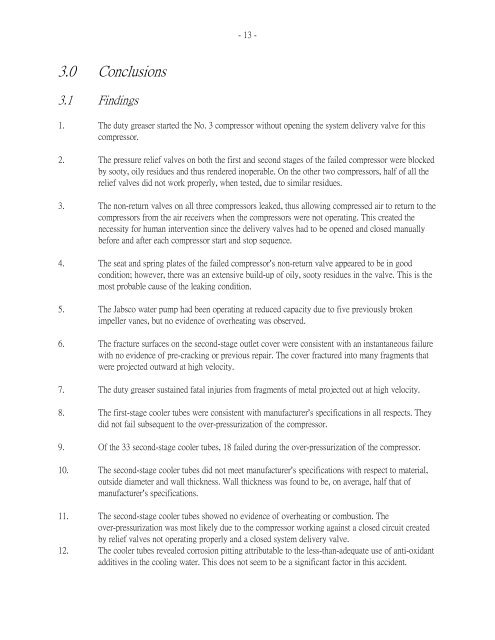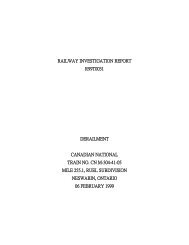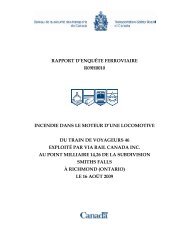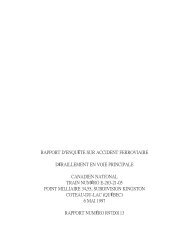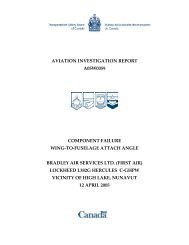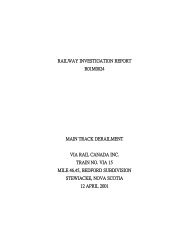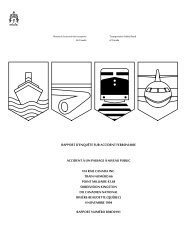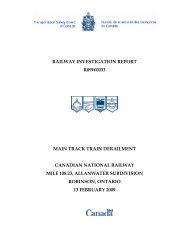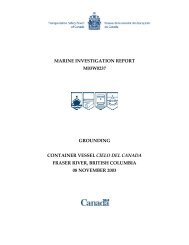marine investigation report m99l0011 compressor bursting
marine investigation report m99l0011 compressor bursting
marine investigation report m99l0011 compressor bursting
You also want an ePaper? Increase the reach of your titles
YUMPU automatically turns print PDFs into web optimized ePapers that Google loves.
3.0 Conclusions<br />
3.1 Findings<br />
- 13 -<br />
1. The duty greaser started the No. 3 <strong>compressor</strong> without opening the system delivery valve for this<br />
<strong>compressor</strong>.<br />
2. The pressure relief valves on both the first and second stages of the failed <strong>compressor</strong> were blocked<br />
by sooty, oily residues and thus rendered inoperable. On the other two <strong>compressor</strong>s, half of all the<br />
relief valves did not work properly, when tested, due to similar residues.<br />
3. The non-return valves on all three <strong>compressor</strong>s leaked, thus allowing compressed air to return to the<br />
<strong>compressor</strong>s from the air receivers when the <strong>compressor</strong>s were not operating. This created the<br />
necessity for human intervention since the delivery valves had to be opened and closed manually<br />
before and after each <strong>compressor</strong> start and stop sequence.<br />
4. The seat and spring plates of the failed <strong>compressor</strong>=s non-return valve appeared to be in good<br />
condition; however, there was an extensive build-up of oily, sooty residues in the valve. This is the<br />
most probable cause of the leaking condition.<br />
5. The Jabsco water pump had been operating at reduced capacity due to five previously broken<br />
impeller vanes, but no evidence of overheating was observed.<br />
6. The fracture surfaces on the second-stage outlet cover were consistent with an instantaneous failure<br />
with no evidence of pre-cracking or previous repair. The cover fractured into many fragments that<br />
were projected outward at high velocity.<br />
7. The duty greaser sustained fatal injuries from fragments of metal projected out at high velocity.<br />
8. The first-stage cooler tubes were consistent with manufacturer=s specifications in all respects. They<br />
did not fail subsequent to the over-pressurization of the <strong>compressor</strong>.<br />
9. Of the 33 second-stage cooler tubes, 18 failed during the over-pressurization of the <strong>compressor</strong>.<br />
10. The second-stage cooler tubes did not meet manufacturer=s specifications with respect to material,<br />
outside diameter and wall thickness. Wall thickness was found to be, on average, half that of<br />
manufacturer=s specifications.<br />
11. The second-stage cooler tubes showed no evidence of overheating or combustion. The<br />
over-pressurization was most likely due to the <strong>compressor</strong> working against a closed circuit created<br />
by relief valves not operating properly and a closed system delivery valve.<br />
12. The cooler tubes revealed corrosion pitting attributable to the less-than-adequate use of anti-oxidant<br />
additives in the cooling water. This does not seem to be a significant factor in this accident.


